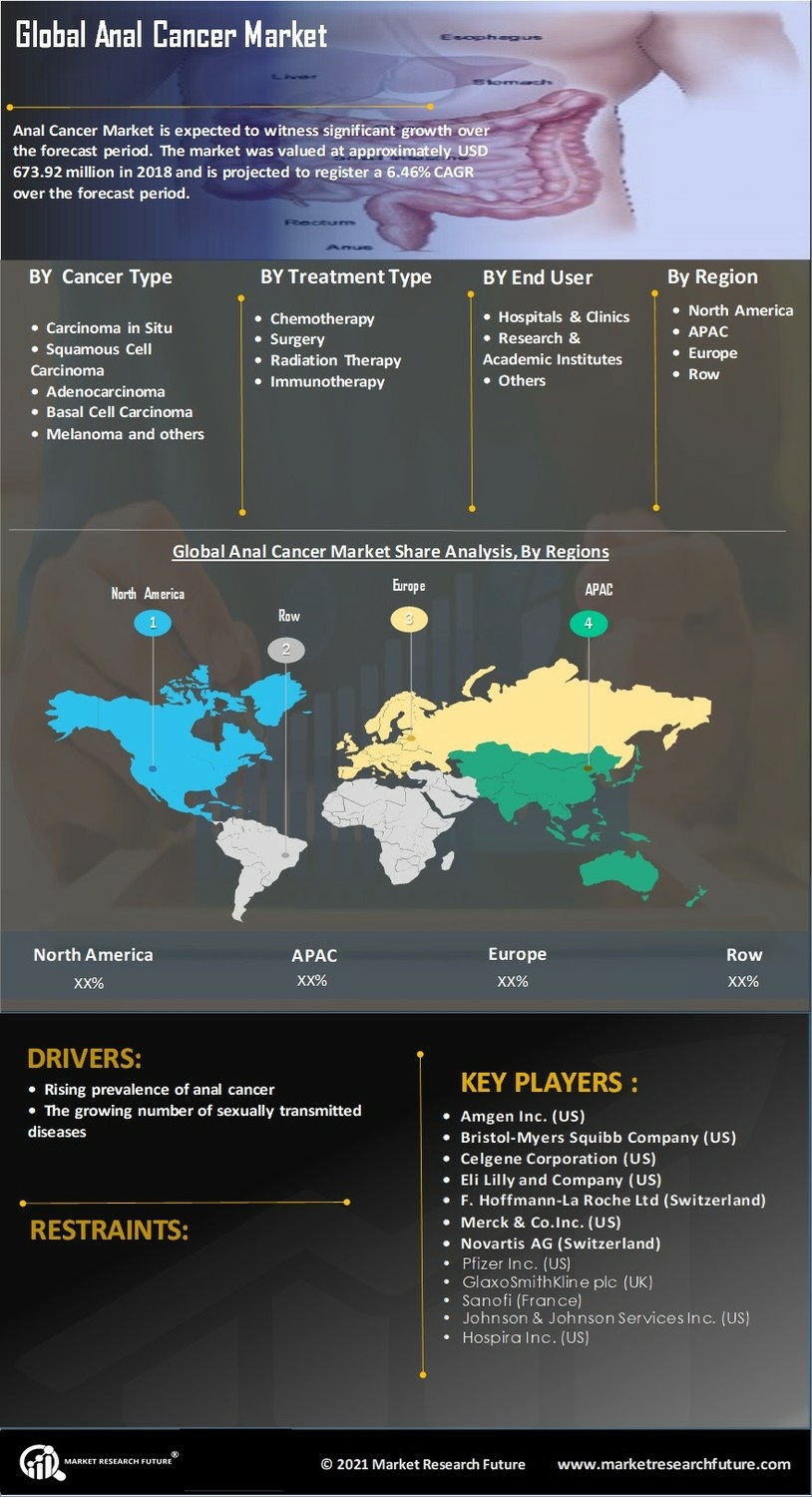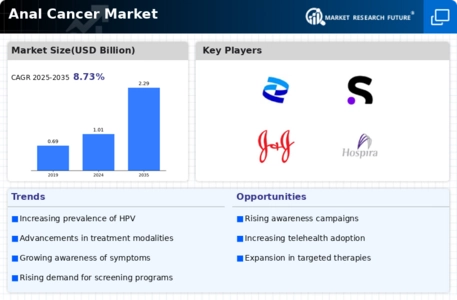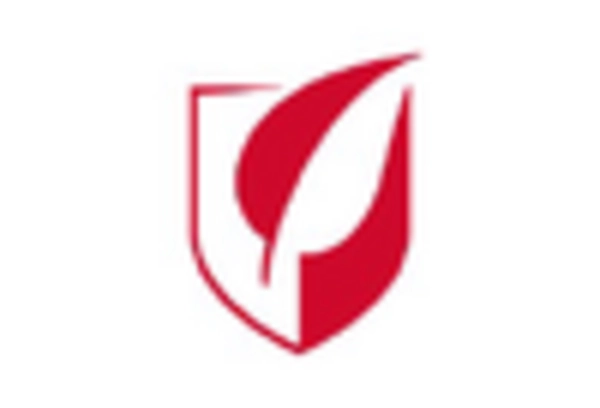Rising Incidence Rates
The Anal Cancer Market is experiencing a notable increase in incidence rates, particularly among certain demographics. Data indicates that the incidence of anal cancer has been rising, especially among men who have sex with men and individuals with compromised immune systems. This trend is likely driven by factors such as increased prevalence of human papillomavirus (HPV) infections, which are a significant risk factor for anal cancer. As awareness of these rising rates grows, healthcare providers and patients alike are more inclined to seek screening and treatment options, thereby propelling the Anal Cancer Market forward. Furthermore, the increasing recognition of anal cancer as a serious health issue may lead to enhanced funding for research and development of new therapies, further stimulating market growth.
Innovative Treatment Options
The Anal Cancer Market is witnessing a surge in innovative treatment options, which may significantly enhance patient outcomes. Recent advancements in surgical techniques, radiation therapy, and chemotherapeutic agents are transforming the landscape of anal cancer treatment. For instance, the introduction of targeted therapies and immunotherapies has shown promise in improving survival rates and reducing recurrence. Additionally, clinical trials are ongoing to evaluate the efficacy of novel combinations of existing treatments. As these innovative therapies gain traction, they are likely to attract investment and interest from pharmaceutical companies, thereby expanding the Anal Cancer Market. The potential for personalized medicine, tailored to individual patient profiles, further underscores the dynamic nature of this market.
Increased Screening and Early Detection
The Anal Cancer Market is benefiting from increased screening and early detection initiatives. As healthcare systems emphasize preventive care, the adoption of screening protocols for high-risk populations is becoming more prevalent. Studies suggest that early detection of anal cancer can lead to better treatment outcomes and survival rates. Consequently, healthcare providers are advocating for regular screenings, particularly among individuals with a history of HPV or other risk factors. This proactive approach not only raises awareness but also drives demand for diagnostic tools and services within the Anal Cancer Market. The potential for early intervention may lead to a decrease in advanced-stage diagnoses, ultimately influencing treatment paradigms and market dynamics.
Technological Advancements in Diagnostics
The Anal Cancer Market is experiencing a transformation due to technological advancements in diagnostics. Innovations such as high-resolution anoscopy and molecular testing are improving the accuracy of anal cancer detection. These technologies enable healthcare providers to identify precancerous lesions and early-stage cancers more effectively, which is crucial for timely intervention. As diagnostic capabilities expand, the demand for these advanced tools is likely to increase, thereby influencing the Anal Cancer Market. Additionally, the integration of artificial intelligence in diagnostic processes may streamline workflows and enhance decision-making, further propelling market growth. The potential for improved diagnostic accuracy could lead to better patient outcomes and a shift in treatment approaches.
Growing Patient Advocacy and Support Groups
The Anal Cancer Market is increasingly influenced by the emergence of patient advocacy and support groups. These organizations play a crucial role in raising awareness about anal cancer, providing education, and supporting patients through their treatment journeys. By fostering a community of individuals affected by anal cancer, these groups help to destigmatize the condition and encourage open discussions about symptoms and treatment options. Their efforts may lead to increased demand for healthcare services and resources, thereby impacting the Anal Cancer Market positively. Furthermore, advocacy groups often collaborate with healthcare professionals and policymakers to promote research funding and improve access to care, which could further enhance the market landscape.

















Leave a Comment